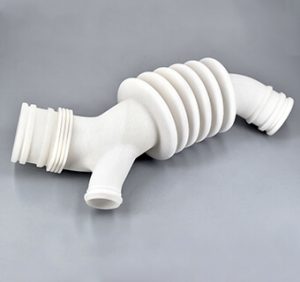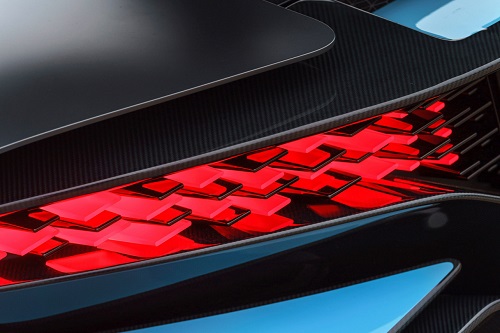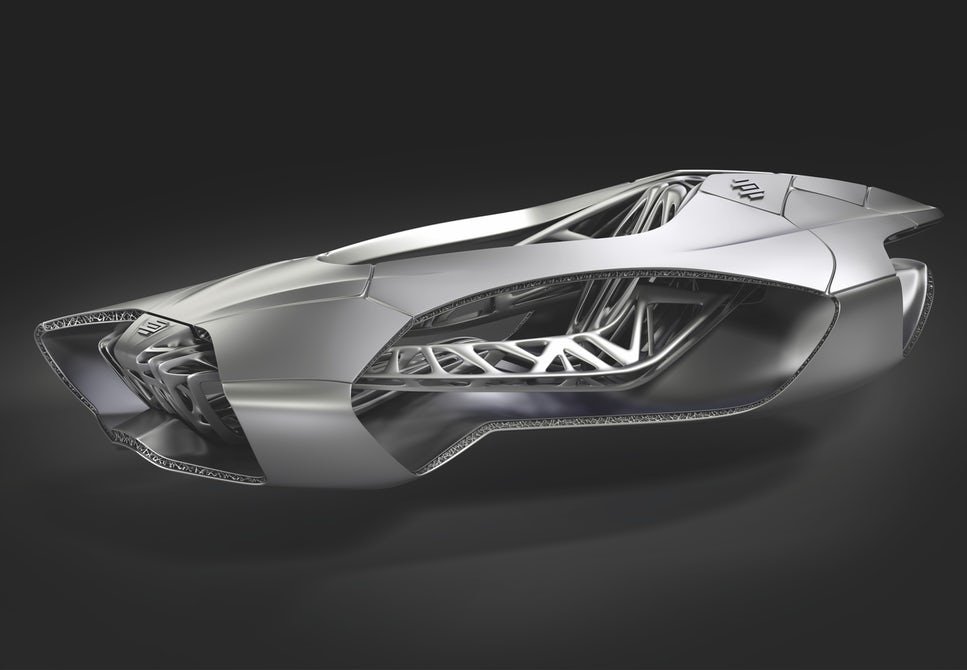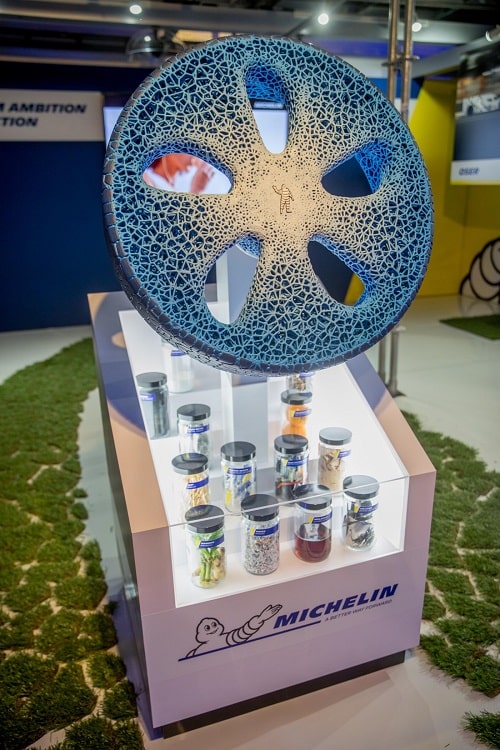3D Lernzentrum
Alle Kategorien

Anmelden
Sollten Sie Probleme beim Einloggen haben, kontaktieren Sie uns.
Registrieren
Zum Starten des 3D-Druckens oder Laserschneidens müssen Sie hier ein Konto erstellen. Sobald Sie fertig sind, können Sie Dateien hochladen und erhalten Echtzeit Angebote für Ihre Objekte.
Haben Sie bereits ein Benutzerkonto? Einloggen
Home » 3D Lernzentrum » 3D-Druck Anwendungen » Automobil und 3D-Druck: Unser Leitfaden für das 3D-gedruckte Auto!
In der Automobilindustrie ist die additive Fertigung ein entscheidender Wendepunkt. Früher war die 3D-Drucktechnologie nur ein Werkzeug für den Prototypenbau – und das ist sie natürlich immer noch. Aber jetzt wird sie auch in der Automobilproduktion eingesetzt. Sie haben richtig gelesen: Wir können jetzt Autos im 3D-Druckverfahren herstellen. Dies ist das Ergebnis einer globalen Tendenz in der Welt der additiven Fertigung: Diese Technologie wird jetzt als eine der ernstzunehmenden Fertigungstechnologien anerkannt und nicht nur als Möglichkeit, einen guten Konzeptnachweis oder Prototyp zu erstellen. Warum ist der 3D-Druck für Automobilhersteller so interessant? Was kann heute erreicht werden? Welches sind die möglichen nächsten Schritte für 3D-gedruckte Autos? Machen Sie sich bereit für die Fahrt und entdecken Sie, wie der 3D-Druck die Automobilbranche verändert!
Sowohl Kunden als auch Hersteller träumen bereits von einem vollständig 3D-gedruckten Auto; dies wird durch die kontinuierliche Verbesserung von 3D-Druckmaterialien und -technologien ermöglicht. Dies führt zu einem wahren Boom des Interesses an Innovationen in der Automobilindustrie.
Das 3D-gedruckte Auto wird noch ein wenig auf sich warten lassen, aber die additive Fertigung wird in der Industrie bereits für verschiedene Anwendungen eingesetzt. Die Hersteller sehen alle Vorteile dieser Technologie für ihre Geschäftsstrategie, von der Produktentwicklung bis zur Produktion. Sie können die Zeit für den Konzeptnachweis und die Produktion verkürzen und Kosten für den Werkzeugbau einsparen. Wir werden sehen, dass einige Anwendungen der additiven Fertigung das Spiel verändern und einen echten Wettbewerbsvorteil darstellen könnten.
Eine 3D-Modellierungssoftware ist der erste Schritt, den Sie unternehmen müssen, wenn Sie ein 3D-Druckprojekt starten. Sie müssen zunächst die perfekte Software für das Auto auswählen, um den Designprozess zu beginnen. Auf dem Markt gibt es keine 3D-Programme, die speziell für Automobilprojekte entwickelt wurden. Aber es gibt verschiedene Software, die Sie für Ihre Automobilprojekte verwenden können.
Die beste Lösung ist die Verwendung einer 3D-Software, die für mechanische und ingenieurtechnische Anwendungen entwickelt wurde und in der Lage ist, industrielle und technische Geräte zu erstellen. Diese Anwendungen verändern die Art und Weise, wie Autos entwickelt und gebaut werden. Die Verwendung von 3D ermöglicht schnellere Iterationen. Diese Apps bieten Simulations- und Visualisierungsfunktionen und können Ihnen mit realistischen Renderings helfen, die Ihnen bei Präsentationen helfen können.
Dies ist eine einfache Methode, um am Design von Autos oder Autoteilen zu arbeiten. Mit diesen 3D-Programmen können Sie fortschrittliche Werkzeuge verwenden, um elektronische Geräte und mechanische Teile zu erstellen. Schauen Sie sich unsere Auswahl der besten Autodesign-Apps an, aber bedenken Sie, dass diese Software nichts für absolute Anfänger ist, Sie müssen schon ziemlich erfahren sein, um eine davon zu benutzen.
Um die additive Fertigung in einem anspruchsvollen Sektor wie der Automobilindustrie einzuführen, müssen Sie angepasste Materialien verwenden. Die mechanischen Eigenschaften, die Sie von der traditionellen Fertigung erwarten, sind nun auch beim 3D-Druck mit Hochleistungsmaterialien verfügbar. Hier sind die besten 3D-Druckmaterialien für Anwendungen in der Automobilindustrie:
Einige Kunststoffe, wie z. B. Polypropylen, werden in der Automobilindustrie häufig verwendet. Ultrasint® PP nat 01 hat ein mechanisches Profil, das neue Anwendungen ermöglicht, insbesondere in der Automobilindustrie. Polypropylen kann zum Beispiel für den 3D-Druck von Innenraumkomponenten, Armaturenbrettteilen, Luftströmen oder angepassten Flüssigkeitssystemen verwendet werden.

Ultrasint® PA6 MF ist sehr widerstandsfähig und eignet sich hervorragend zur Herstellung von Funktionsteilen für den Motorraum und viele andere Teile im Transportsektor. PA6 ist stark genug, um die gesamte Motorbaugruppe zu halten und allen Hitze-, Vibrations- und statischen Belastungen standzuhalten. Dank des 3D-Drucks und der Mediendichtigkeit dieses PA6 MF-Materials können Sie maßgeschneiderte chemikalienbeständige Teile wie z. B. 3D-gedruckte Reservoirs herstellen.

Sind Sie auf der Suche nach einem widerstandsfähigen und flexiblen Material? Mit beeindruckenden Eigenschaften wie hohem Rückprall, niedrigem Druckverformungsrest und gutem Ermüdungsverhalten ist TPU ideal für Anwendungen, die Stoßdämpfung, Reibung oder Flexibilität erfordern!
Ultrasint® TPU 88A oder Ultrasint® TPU 01 können beide in der Automobilindustrie eingesetzt werden, um zum Beispiel Komponenten für den Fahrzeuginnenraum herzustellen. Mit einer Shore A 88 können Luftfilterabdeckungen, kardanische Faltenbälge oder andere flexible und widerstandsfähige Teile, die in der Automobilindustrie benötigt werden, mit TPU 3D-gedruckt werden.

Es ist auch möglich, mehr Nachhaltigkeit in Ihren Herstellungsprozess zu bringen, indem Sie biologisch hergestellte Materialien verwenden. 3D-druckbares Nylon PA11 basiert auf 100% erneuerbaren Biomassequellen. Der Rizinussamen wird aus der Rizinuspflanze extrahiert, um Öl zu gewinnen. Das Öl wird dann in das Monomer (11-Aminoundecansäure) umgewandelt, das schließlich zu Polyamid 11 polymerisiert wird. Hier sind einige Optionen, die für die Herstellung von Automobilteilen geeignet sind:

Die Automobilhersteller suchen ständig nach neuen Möglichkeiten, das Gewicht ihrer Produkte zu reduzieren. Ein leichteres Auto verbraucht nämlich weniger Kraftstoff und ist damit umweltfreundlicher. Um dies zu erreichen, können Sie das Design Ihrer Teile optimieren. So hat Volkswagen beispielsweise einen verstärkten A-Säulen-Fensterhalter optimal umgestaltet. Er wiegt 74 % weniger als das Originalteil. Sie können entweder leichtere Strukturen durch innovative Konstruktionsmuster wie Gitter schaffen oder die Anzahl der Teile des Fahrzeugs durch eine geeignetere Gestaltung der Komponenten reduzieren.
Der 3D-Druck ist ein gutes Werkzeug, um die Struktur zu optimieren und das Gewicht eines Teils zu reduzieren. Genau aus diesem Grund hat der französische Automobilhersteller Bugatti damit begonnen, einige 3D-gedruckte Teile in sein neues Auto, den Divo Supercar, einzubauen. Die Reduzierung des Gesamtgewichts dieses Wagens ist eine Möglichkeit, die Leistung des Wagens zu verbessern, der noch aerodynamischer sein soll. So wurden zum Beispiel die Rückleuchten gedruckt, wodurch sie leichter sind als beim Vorgängermodell.

Source: Bugatti Automobiles S.A.S
Die additive Fertigung eröffnet den Automobilherstellern neue Designmöglichkeiten. Genau das hat das deutsche Designstudio EDAG verstanden, als es das 3D-gedruckte Auto Light Cocoon entwickelte. Sie kombinierten 3D-Druck mit generativem Design, inspiriert von der Natur. Sie arbeiteten erfolgreich an der topologischen Optimierung ihrer 3D-gedruckten Strukturen, die dann mit einem dehnbaren Stoff überzogen wurden, der extrem leicht ist: nur 19 Gramm pro Quadratmeter. Die optimierte Struktur des EGAD Light Cocoon wurde mit der SLM-3D-Drucktechnologie hergestellt.

Credits: EDAG
Viele Autoliebhaber genießen es, ihre Autos individuell zu gestalten, um ein einzigartiges Fahrzeug zu erhalten. Dabei kann es sich um einige äußere Designmerkmale handeln, aber auch um einige Optionen für die inneren Komponenten des Autos. Da es sich um eine Sonderanfertigung handelt, ist dies für die Autohersteller mit Kosten verbunden. Mit dem 3D-Druck ist es kein großes Problem, nur eine Version eines Modells zu erstellen.
EDAG hat auch ein 3D-gedrucktes Auto namens Genesis entwickelt. Dabei handelt es sich jedoch nicht um ein Fahrzeug, sondern eher um ein innovatives physikalisches Konzept. Es erhöht die Sicherheit der Passagiere dank einer revolutionären, von Schildkrötenpanzern inspirierten Struktur, die mit der SLS-Technologie (Selective Laser Sintering) hergestellt wird. Warum eine solche Inspiration? Die Schildkröte profitiert von Millionen von Jahren der Evolution für ihren Schutzpanzer, der von Natur aus ziemlich optimiert ist. Die Reproduktion solcher Strukturen ist jedoch nicht immer einfach. Mit Hilfe der additiven Fertigung ist es möglich, solche komplexen Geometrien herzustellen. Wie sehen die Ergebnisse aus? Die optimierten Strukturen haben bei Crashtests sehr gut abgeschnitten.

Source: EDAG
Die Entwicklung nachhaltigerer Fahrzeuge ist auch in der Automobilindustrie ein wichtiges Anliegen. Urbee entwirft ein 3D-gedrucktes Elektroauto, mit dem ein beeindruckender Meilenstein erreicht werden soll. Das Team möchte mit dem Auto zwei Personen und einen Hund von New York nach San Francisco bringen und dabei nur 10 Gallonen Biokraftstoff verbrauchen. Wie ist das möglich? Die Außenhaut des Autos wird vollständig in 3D gedruckt (mit der Polyjet-Technologie) und so optimiert, dass sie extrem leicht ist.
Das Auto Projet M wurde von Shell entwickelt und besteht jetzt aus 93 3D-gedruckten Teilen. Dieses Projekt und vor allem sein Design sind von Gordon Murays T.25-Konzeptstadtauto aus dem Jahr 2010 inspiriert.
Dieses Auto ist ein superleichtes und energieeffizient. Shell hat bei der Entwicklung dieses Fahrzeugs tatsächlich Zeit und Geld gespart, weil die additive Fertigung die Möglichkeit bot, alle Komponenten viel schneller zu erhalten als mit herkömmlichen Herstellungsverfahren.

Source: Autoplus
Auch Luxusautomarken setzen additive Fertigung in ihrem Produktionsprozess ein! Der Automobilhersteller Bentley hat bei einem seiner Luxusautos, dem Bentley EXP 10 Speed 6, einem 2015 auf den Markt gebrachten Hybrid-Konzeptauto, den 3D-Druck von Metall eingesetzt. Teile des Kühlergrills und Teile der Karosserie wurden mit additiver Fertigung hergestellt. Dieses Auto ist der Beweis dafür, dass es möglich ist, neue Technologien und Handwerk zu kombinieren! Komplizierte und komplexe 3D-gedruckte Teile haben bei der Herstellung dieses Fahrzeugs einen großen Nutzen gebracht.
Wenn einige Teile eines Autos kaputt gehen, kann es eine echte Herausforderung sein, sie zu ersetzen, vor allem, wenn es sich um ein altes Auto handelt: Die Teile gibt es vielleicht nicht mehr. Was ist dann zu tun? Durch die Kombination von 3D-Scannen und additiver Fertigung ist es möglich, seltene Ersatzteile für Autos zu reproduzieren und sie sogar zu optimieren, bevor sie in 3D gedruckt werden.
Sogar traditionelle Autohersteller machen sich die 3D-Druck-Revolution zu eigen! Jaguar zum Beispiel nutzt die Möglichkeiten, welche die additive Fertigung seinen Kunden bieten kann. Das Unternehmen nutzte 3D-Scans, um das klassische XKSS-Modell von 1957 nachzubauen. Die vollständige Nachbildung dauerte 18 Monate. Der einzige Unterschied zum Originalfahrzeug lag in den modernen Sicherheitsanforderungen. Diese Art der Anwendung des 3D-Drucks kann auch für jede Art von Ersatzteilnachbau eingesetzt werden, insbesondere für alte Fahrzeuge, die möglicherweise nicht mehr auf dem Markt erhältlich sind.

Wie Jaguar setzt auch Porsche Classic, die Abteilung von Porsche für alte und klassische Fahrzeuge, die additive Fertigung für kleine Serien von Ersatzteilen ein. Denn einige Teile dieser berühmten Fahrzeuge sind nicht mehr erhältlich. Alle Teile, die mit diesem additiven Verfahren hergestellt werden, erfüllen selbstverständlich die Anforderungen an absolute Originaltreue, sowohl in technischer als auch in optischer Hinsicht. Diese Ersatzteile werden mit SLS-3D-Druckern hergestellt.
Das Auto von Elvis wurde teilweise mit Hilfe von 3D-Druckern restauriert. Teile dieses BWM 507 werden nämlich nicht mehr hergestellt. Das Team von BMW Group Classic nutzte die additive Fertigung, um einige der alten Komponenten dieses Oldtimers nachzubauen. Ohne 3D-Druck wäre diese Restaurierung unmöglich gewesen!
Das PUV wurde vom Oak Ridge National Laboratory für ein Projekt namens AMIE: Additive Manufacturing Integrated Energy entwickelt. Ziel dieses Projekts ist es, neue Innovationen zu finden, um Energie zu erzeugen, zu nutzen und zu speichern. Die gesamte Karosserie dieses Fahrzeugs wurde aus kohlenstofffaserverstärktem Kunststoff hergestellt, der mit einem großen 3D-Drucker gedruckt wurde. Dieses Fahrzeug soll drahtlos Energie an Gebäude übertragen.
Der französische Reifenhersteller Michelin beschloss, mit seinem Projekt “Vision” das Rad buchstäblich neu zu erfinden. Sein Hauptziel ist es, die Umweltauswirkungen von Autos zu verringern und das Recycling seiner Produkte zu verbessern. Zu diesem Zweck wurde ein von der Natur inspiriertes Rad mit einer Wabenstruktur entwickelt, für das ausschließlich organische Materialien verwendet werden. Sie verleiht dem Rad Festigkeit und eine sehr gute Widerstandsfähigkeit, so dass ein platter Reifen unmöglich ist. Darüber befindet sich eine dünne, 3D-gedruckte Gummischicht, die Lauffläche, die nach Gebrauch recycelt werden kann. Sie kann in nur wenigen Minuten 3D-gedruckt und ausgetauscht werden. Leider ist dieses Projekt noch nicht marktreif und dürfte erst in 10 Jahren auf den Markt kommen.

Unser Kunde Additive Restoration nutzt die additive Fertigung, um Teile für Oldtimer herzustellen. Der 3D-Druck scheint für sie die perfekte Lösung zu sein, um Kleinserien und kundenspezifische Teile herzustellen! Der 3D-Druck dieser Teile ist auch ein großer Vorteil, wenn es darum geht, das Management der Lieferkette zu überdenken: Er bietet die Möglichkeit, ein digitales Inventar zu erstellen und das benötigte Teil zu fertigen, wenn Sie es brauchen.
Wir haben Ihnen gerade die coolsten Autos gezeigt, die mit 3D-Druck hergestellt wurden. Haben Sie jetzt Lust bekommen, Ihr eigenes Projekt eines 3D-gedruckten Fahrzeugs zu verwirklichen? Für ein erfolgreiches Projekt mit 3D-gedruckten Autoteilen haben wir hier ein paar Tipps von unseren verschiedenen Kunden aus der Automobilbranche gesammelt. Zuallererst müssen Sie sich Gedanken über die Funktion Ihres 3D-gedruckten Autoteils machen. Dies wird Ihnen helfen, das richtige Material für Ihr Projekt zu wählen, entsprechend den technischen Spezifikationen Ihrer Objekte und den mechanischen Eigenschaften des Materials. Wenn Sie unseren Online-3D-Druckservice nutzen, finden Sie all diese Informationen auf unseren speziellen Materialseiten. Wenn Sie ein bestehendes Autoteil reproduzieren, empfehlen wir Ihnen außerdem, es noch einmal zu überarbeiten, um sein Design entsprechend den Möglichkeiten der additiven Fertigung zu optimieren. Sie können Ihr 3D-Modell überarbeiten, um weniger Material zu verbrauchen, den Preis Ihres Teils zu senken, es mit komplexen Strukturen leichter zu machen oder einfach um es besser aussehen zu lassen. Es steht Ihnen frei, für Ihre Projekte verschiedene 3D-Druckmaterialien zu verwenden. Für einige Teile könnte beispielsweise der 3D-Druck aus Metall erforderlich sein, während andere dank des 3D-Drucks aus Kunststoff perfekt hergestellt werden können, auch wenn es sich ursprünglich um Metallteile handelt. Selektives Lasersintern und selektives Laserschmelzen sind zwei Technologien, die bei der Einführung des 3D-Drucks im Automobilsektor sehr hilfreich sein können. Brauchen Sie Hilfe bei der Optimierung Ihrer Autoteile für Ihre additiven Fertigungsprojekte? Wenden Sie sich an unsere Experten von Sculpteo Studio, unserem 3D-Druck-Beratungsdienst und Designstudio!
Der Strati wurde von Local Motors entwickelt, einer Open-Source-Denkfabrik, die sich auf Technik und Design konzentriert. Es handelt sich um ein 3D-gedrucktes Auto, das in einer sehr kurzen Vorlaufzeit hergestellt wurde: Es dauerte nur 44 Stunden, um es zu drucken! Das gesamte Auto wurde nicht mit additiver Fertigung hergestellt, was eine so schnelle Produktion erklärt. Tatsächlich wurden die Räder und die Batterie mit anderen Fertigungstechnologien hergestellt. Aber das gesamte Karosserieteil wurde mit FDM-3D-Druckern hergestellt, wie Local Motors erklärt.
Dieses 3D-gedruckte Fahrzeug wurde von der italienischen Firma XEV und dem Unternehmen Polymaker, das 3D-Druckmaterialien herstellt, entwickelt. Das gesamte Projekt soll zeigen, wie der 3D-Druck für die Produktion angepasst werden kann. Dieses Auto ist das erste Massenproduktionsprojekt für ein ganzes Auto in der Automobilbranche. Durch die Arbeit an den Materialien und der Struktur konnte der Hersteller ein leichteres Auto herstellen, das 7.500 Dollar kostet. Dieses Produktionsverfahren führt zu einer Senkung der Investitionskosten um mehr als 70 % im Vergleich zu einem herkömmlichen Produktionssystem. Dieses 3D-gedruckte Elektroauto ist bereits ein Erfolg, denn es wurden bereits 7000 Exemplare hergestellt, bevor der Massenproduktionsprozess überhaupt begonnen hat.

Source: LSEV
Divergent 3D hat unter der Leitung seines CEO Kevin Czinger auf der CES 2017 einen sehr interessanten 3D-gedruckten Sportwagen vorgestellt. Es ist das erste 3D-gedruckte Auto der Welt, das voll funktionsfähig ist. Eine der Hauptinnovationen des 3D-gedruckten Supersportwagens von Divergent ist die Verwendung der “Node”-Technik, bei der Aluminiumknoten 3D-gedruckt und mit 3D-gedruckten Kohlenstofffasern kombiniert werden, was zu einem viel leichteren Auto führt, das jedoch sehr widerstandsfähig ist. Ziel des Projekts war es, die Nachhaltigkeit der Autoproduktion zu verbessern. Der Einsatz von 3D-Druck in der Fabrik hilft ihnen, Emissionen zu reduzieren, ein viel leichteres Auto zu produzieren und weniger Material zu verschwenden. Das Gesamtziel ist es, das Gewicht eines Standardautos um über 50 % und die Anzahl der Teile, um über 75 % zu reduzieren, wie CEO Kevin Czinger erklärte. Das Auto befindet sich derzeit in der Prototyp-Phase, Sie sollten also die nächsten Iterationen im Auge behalten!
Die Automobilbranche nutzt diese Spitzentechnologie nicht nur für den Bau von Autos. Auch Motorräder können in 3D gedruckt werden. NowLAB und Big Rep haben während der letzten FormNext-Ausgabe das erste 3D-gedruckte Motorrad entwickelt. Mit Hilfe der additiven Fertigung konnte dieser voll funktionsfähige Prototyp eines Elektrofahrrads hergestellt werden, nur die elektronischen Teile sind nicht in 3D gedruckt.
Sie wissen es vielleicht nicht, aber die additive Fertigung ist auch ein großer Gewinn für Ihren Werkzeugbau. 3D-gedruckte Werkzeuge sind sehr nützlich und helfen Ihnen, die Effizienz Ihrer Produktion zu maximieren.
Der Automobilhersteller Volkswagen Autoeuropa nutzt den 3D-Druck zur Herstellung einiger seiner Werkzeuge. Das Unternehmen schätzt, dass es dank des 3D-Drucks im Jahr 2017 250.000 € einsparen konnte. Die Verringerung Ihrer Werkzeuginvestitionen dank 3D-Druck könnte die perfekte Lösung sein.
Auch der Automobilhersteller Ford nutzt die additive Fertigung in seinem Werk, um angepasste Werkzeuge herzustellen, die den Mitarbeitern bei der Fahrzeugproduktion helfen. Diese Werkzeuge können dann an bestimmte Aufgaben und Situationen angepasst werden. Werkzeuge, Vorrichtungen und Halterungen können ganz einfach in 3D gedruckt werden, wenn sie benötigt werden. Durch die Einführung des 3D-Drucks können die Mitarbeiter die benötigten Werkzeuge direkt herstellen und den gesamten Arbeitsablauf optimieren.
Wie Sie sicher bemerkt haben, ist die Ära der in Massenproduktion hergestellten, vollständig 3D-gedruckten Autos noch nicht Realität. Die am weitesten fortgeschrittenen Projekte sind entweder nur 3D-gedruckte Autoteile oder Prototypen. Aber die Forschung in diesem Bereich schreitet schnell voran, da das Interesse an den Vorteilen der additiven Fertigung für die Automobilindustrie groß ist.
Ein großes Problem sind die Kosten des 3D-Drucks. Die additive Fertigung ist nicht immer die billigste Produktionstechnik für eine sehr große Serie von großen Teilen. Besonders problematisch ist dies bei 3D-gedruckten Metallteilen, die in der Automobilindustrie häufig verwendet werden. Aber der kontinuierliche Rückgang der 3D-Druckkosten für alle Technologien verändert die derzeitige Dynamik.
Daher werden wir wohl noch einige Jahrzehnte warten müssen, bis diese Technologie zur regulären Herstellung kompletter Autos eingesetzt wird und das weltweit erste 3D-gedruckte Auto verkauft werden kann. Aber für die Herstellung von Ersatzteilen ist der 3D-Druck schon jetzt ein beeindruckender Verbündeter, der vielversprechende Möglichkeiten eröffnet, sei es in Bezug auf Designoptimierung, Leichtbau, Nachhaltigkeit und Kreativität.
Sind Sie bereit, die Möglichkeiten der additiven Fertigung für Ihre Projekte mit 3D-gedruckten Autoteilen zu nutzen, sei es für den Bau eines funktionalen Prototyps, eines Proof of Concept oder eines fertigen Produkts? Starten Sie mit unserem Online-3D-Druckservice, probieren Sie unsere SLS- oder SLM-Lösungen aus! Oder möchten Sie vielleicht mehr über die 3D-gedruckte Automobilherstellung erfahren?
Innerhalb der Automobilindustrie finden mehrere Materialien Anwendung, wie zum Beispiel Polypropylen (Ultrasint® PP nat 01), Polyamide 6 (Ultrasint® PA6 MF), TPU (Ultrasint® TPU 88A und Ultrasint® TPU 01) und Nylon PA11 (Ultrasint® PA11, MJF PA11 und Ultrasint® PA11 CF).
Die additive Fertigung ist im Automobilsektor weit verbreitet, einige Autos werden teilweise mit der 3D-Drucktechnologie hergestellt. 3D-gedruckte Konzeptautos und Fahrzeugprototypen werden von Unternehmen entwickelt, die das Beste aus der additiven Fertigung herausholen und die Grenzen dieser Fertigungstechnik verschieben wollen.
Erhalten Sie die neuesten 3D-Druck-Nachrichten direkt in Ihr Postfach!
 Mit Google anmelden
Mit Google anmelden  Mit Facebook anmelden
Mit Facebook anmelden